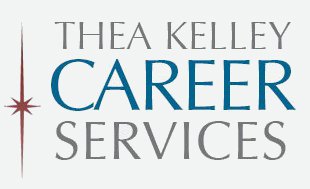 In last week’s post I explored the question, “What’s a Good Number of LinkedIn Connections?” and the benefits of having “lots!” This week I’ll give some tips on how to easily build up to a large network that supports your goals for networking and professional visibility.
In last week’s post I explored the question, “What’s a Good Number of LinkedIn Connections?” and the benefits of having “lots!” This week I’ll give some tips on how to easily build up to a large network that supports your goals for networking and professional visibility.
Now maybe you’re thinking, “I want quality, not just quantity.” Agreed. And on LinkedIn, quantity tends to lead to quality. Having a generously sized network makes it easier to find, connect with, and be noticed by those influential people, those company insiders, hiring managers or others, who can really make a difference in your career.
First: don’t get restricted!
This part is crucial but easily handled.
When you invite someone to connect, they have various options, including clicking “Ignore,” and according to LinkedIn’s Help file they can also click “I don’t know this person.” Too many such “I don’t knows”–also known as IDKs–can cause LinkedIn to restrict you from inviting other people to connect until you contact LinkedIn and promise to be more selective in future.
But here’s the thing: most people aren’t trigger-happy about giving IDKs. I can’t even find the option on the page, despite LinkedIn’s claim that it’s there. (Maybe their Help file is out of date.)
It helps a lot to include a nice note with your invitation pointing out interests and/or contacts you have in common. For example:
I’m building my network and I noticed that we have three connections in common, including Bob Parr. We also both belong to the Digital Marketing Managers group. I’d be honored if you would join my network. Thanks!
Get your invitations accepted.
Let’s say there’s a key person you’d like to connect to and you’re not sure they’ll accept your invitation. If you don’t yet have connections in common with them, first join some LinkedIn groups they belong to, if any. Belonging to LinkedIn groups has other benefits as well, including networking opportunities and improved search rankings. If they’ve posted anything lately, you might post an intelligent comment on it. Next, try connecting with other people they’re connected to. Then invite them with a note pointing what you have in common, mentioning explaining why you’d like to connect with them and what they might get out of it.
For most requests, you won’t need to do all of that. For example, most of the people I connect to are folks with whom I’ve already had some contact, so all it takes is a polite “I’d be honored if you would join my network. Thanks!”
Connect to almost everyone you know.
There are very few categories of people I really don’t advise connecting to, and they’re pretty obvious. Don’t connect to people you really don’t want to be associated with, such as someone who has harassed you, or an unethical co-worker. Don’t accept invitations from fake profiles. And ignore connection requests that include a compliment about your looks. The compliment may be true, but the “admirer” is probably a fraudster working a fake profile.
Should you avoid connecting with your current boss and others at work, in case they notice you’re using LinkedIn to look for a new job? A much better choice is to exercise discretion in your privacy settings (e.g., whether your contacts are able to see who else you’re connected to) and what you post.
It’s usually advisable to connect with:
- Most or all of your colleagues, current and past
- Past managers/supervisors
- People you encounter in your day-to-day work, e.g., prospective customers, vendors, consultants, etc.
- Nearly everyone you’ve communicated with in your job search, e.g., info interviewees, career coaches, etc. (but check those privacy settings!)
- Lots of recruiters in your industry, and recruiters (and others) at companies you’re interested in working for (same caveat re: privacy settings)
- LinkedIn contacts of your existing LinkedIn contacts–as long as they seem to be real people
- Members of any professional associations or clubs you belong to
- Fellow college students/alumni, no matter how long ago you graduated
- Your professors, especially if you’re a student or recent grad
- Other instructors
- Personal friends and acquaintances
- Neighbors
- Sports partners and fellow hobbyists
- Your spouse
- Family members
- Personal contacts such as your accountant, dentist, doctor, hair stylist, etc
“My hair stylist? My parents? How is that going to help me?” Why not? You never know whether at some time in the near future–or even now–one of their connections might be useful to know. And remember, every connection builds your 1st, 2nd 3rd degree network, which is useful for all the reasons I discussed in last week’s post.
You can send up to 3,000 invitations!
Don’t use up all 3,000 now, okay? And you can connect with far more people than that. But how, if you can only invite 3,000? Actually you won’t need to invite anywhere near that many people, because…
If you build it, they will come.
As you build a larger network, more and more people will invite you to connect. If your goal is to have a big network, accept a lot of those invitations.
Do you see now how easily you can get more LinkedIn connections? Build your network and reap the benefits of easier networking and greater visibility to prospective employers, customers and other people you’ll want to know.

